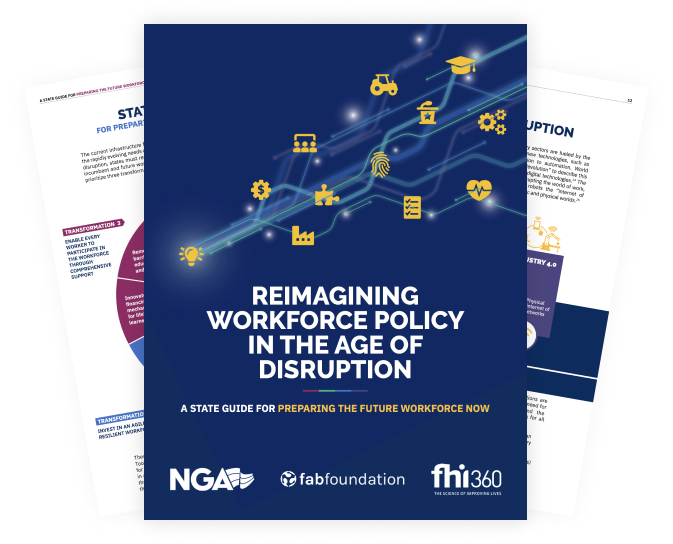Establish a bold, collaborative vision for credential attainment. 43 states have established postsecondary attainment goals for the number of adults who must hold a higher education credential to meet the nation’s need for talent. The most promising examples of these attainment goals combine a long-term goal with measurable, shorter-term goals, and metrics that align state, federal and private funding sources across the education and workforce system. To increase accountability, states should also consider ways to clearly articulate the state’s attainment goal, including a target date, in statute, higher education master plans, or other public documents
State Program Examples
-

Iowa
Future Ready Iowa
To increase Iowa’s talent pipeline, Governor Reynolds set a goal of 70 percent of Iowa’s workforce to have education or training beyond high school by 2025. In August 2016, Executive Order 88 created the Future Ready Iowa Alliance, a collaborative approach aimed at highlighting best practices and nurturing high-quality partnerships to meet the state’s attainment goal and workforce needs. Funding from an NGA grant supported staff to develop short- and long-term metrics and reporting benchmarks on this goal, which state leadership used as evidence to request an $18 million increase in workforce training programs targeted at proven and promising training models in high-demand occupations. To build on this goal, the legislature later enacted Senate File (SF) 2353, which requires local workforce boards to develop and implement career pathways aligned with statewide workforce goals. Since then, the Alliance has established three programs including the Last-Dollar Scholarship, Employer Innovation Fund and resources to help employers prepare their future workforces.
-

Oregon
Revised Attainment Goal for Adult Learners
In 2017, the Oregon Legislature enacted House Bill 2311, revising the state postsecondary attainment goal to include working-age adults not currently enrolled in an institution of higher education or another post-secondary training program. The bill also requires the Higher Education Coordination Commission in conjunction with the Oregon Workforce Investment Board to develop this goal in alignment with statewide with career trajectories, education interests, and job opportunities.











